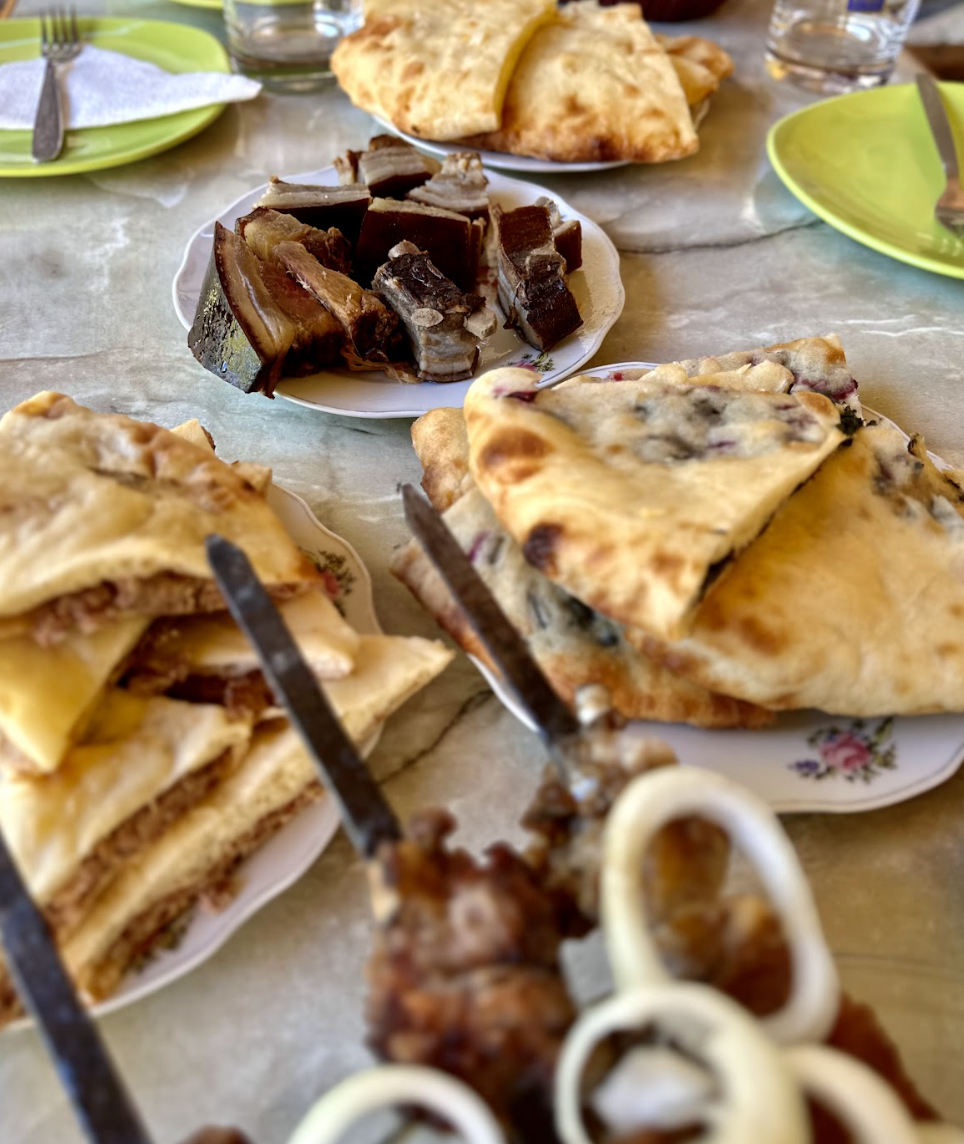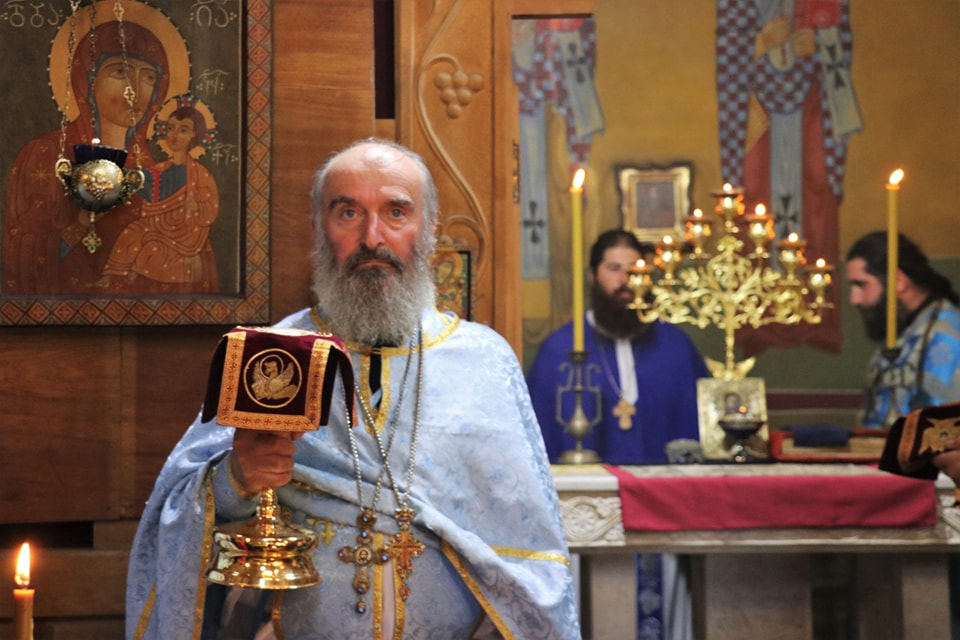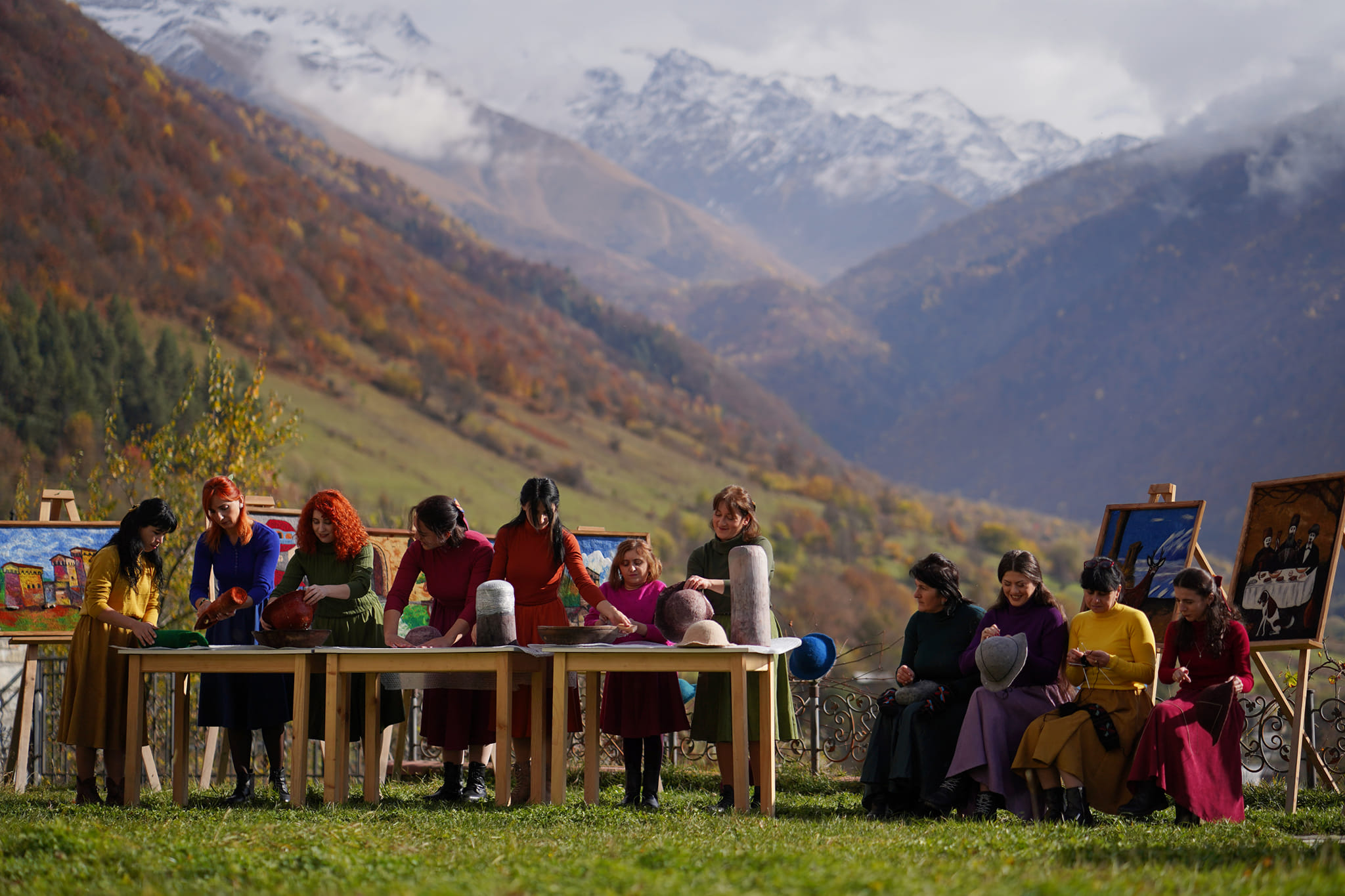
Intangible Cultural Heritage in Oni Municipality
 Racha-Lechkhumi Kvemo Svaneti, Georgia
Racha-Lechkhumi Kvemo Svaneti, Georgia
Since 2009, Solimar International has been managing sustainable tourism development projects in the Republic of Georgia, called Sakartvelo by its residents. Some of the projects Solimar has managed there include:
- Regional Development Program 2009-2011 (World Bank)
- Georgia National and Regional Tourism Plans 2014-2015 (GNTA)
- USAID Economic Security Program 2019-2024 (DAI)
- Green Economy: Sustainable Mountain Tourism and Organic Agriculture 2019-2023 (ADA)
In 2022, Solimar was subcontracted by Cultivating New Frontiers in Agriculture (CNFA) to manage the tourism development elements under the USAID Resilient Communities Program, a five-year activity to strengthen target communities in the administrative boundary line (ABL) along the borders of Georgia’s occupied regions. By promoting inclusive and sustainable socio-economic development, the program endeavors to generate employment opportunities, boost income levels, and augment the revenues of micro, small, and medium enterprises (MSMEs). This, in turn, helps counter prolonged malign influence.
Oni Municipality is one of those target communities.
Reintroducing Historical Oni Municipality as a Tourist Destination
Oni Municipality, located within the Racha-Lechkhumi and Kvemo Svaneti region of northwest Georgia (referred to simply as Racha), is situated in the breathtaking Greater Caucasus, known for its mountain retreats, untouched landscapes, and historical significance. Oni once enjoyed an era of economic growth through tourism in the 1920s when balneological resorts were built around the mineral natural springs in the area.
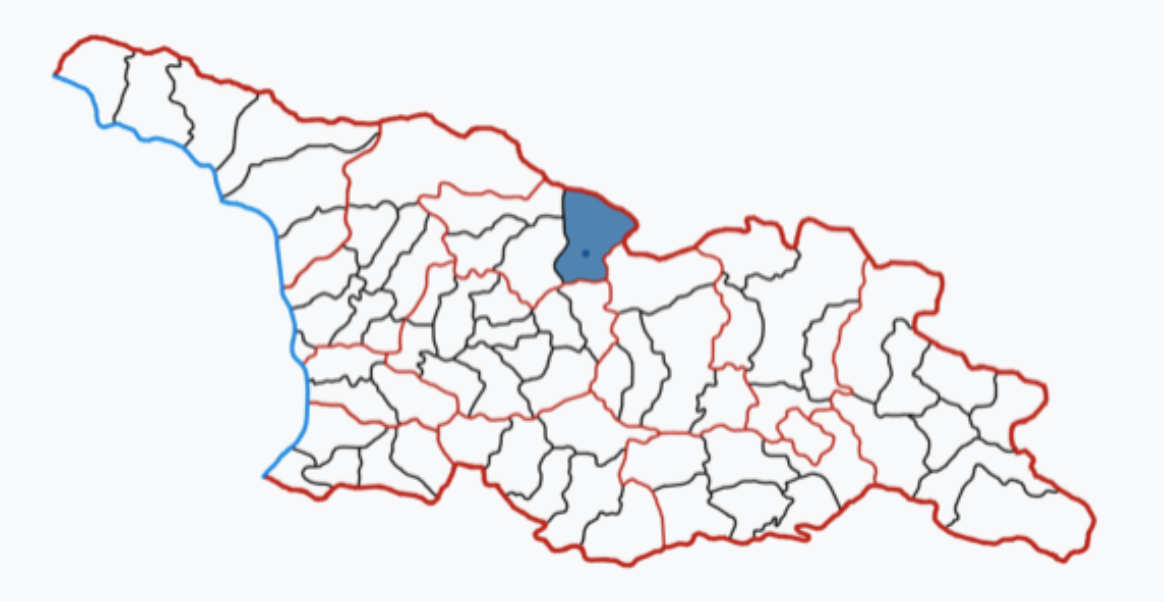
In 1930, Georgia’s first female film director Noutsa Gogoberidze collaborated with the influential avant-garde painter David Kakabadze and documented rural village life in the mountains of Racha. Seven years later, Noutsa was arrested and exiled. Her work was banned and the film wasn’t recovered until after her death in 1966. The silent, black and white documentary film with Russian titles is called Buba (“Буба”), named after an area glacier. Though much of it was destroyed or lost, you can watch around 40 minutes of the film on YouTube. It is a beautiful cinematographic montage of Oni’s heritage, capturing village life and culture, the dangers of mountain living (a landslide is depicted, foreshadowing the devastating August 3, 2023 disaster), and the development of hydropower dams and the tourism industry through the famous mineral spring resorts.
Today, the destination’s humble assets are a mix of intangible cultural heritage and natural resources, products, and points of interest, including cold mineral springs, the Oni Synagogue, Lake Udziro, Mravaldzali Church, Village Gona, Shoda-Kedela Mountain Range, and Sasvano Lakes. While technically being a part of Racha, Oni has historically received less attention from visitors than other destinations in the region, such as the Ushguli community (a UNESCO World Heritage Site) and Mestia (a UN Best Village), both located in Svaneti.
Tourism Cluster of Oni and Destination Management
To address the disparity and harness the region’s tourism opportunities, the Tourism Cluster of Oni was established in November 2022 as a part of the “Mayors for Economic Growth” EU project. This organization, driven by a group of enthusiastic local business owners and community stakeholders, aims to promote sustainable socio-economic development in Oni by highlighting its distinct identity as a separate and compelling destination. Through the tourism cluster, efforts will be made to showcase Oni’s exceptional natural beauty, traditional customs, and rich history, creating an inviting atmosphere for travelers seeking off-the-beaten-path experiences. By leveraging its intangible cultural heritage and emphasizing sustainable tourism practices, Oni endeavors to emerge once again as a vibrant and prosperous hub, contributing to the overall development of the Racha region and fostering a sense of place and pride among its residents.
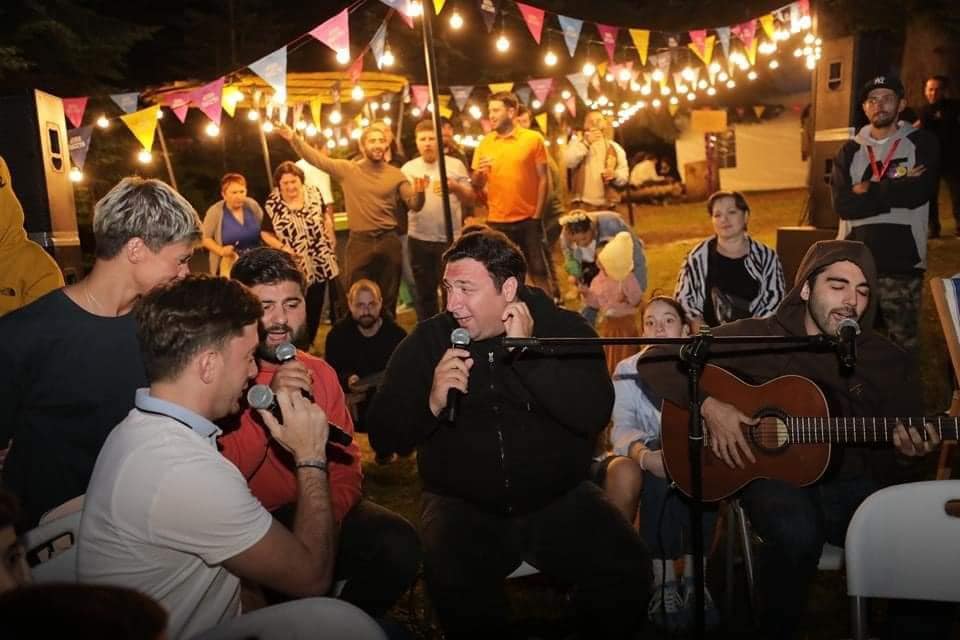
Through the USAID Resilient Communities Program, Solimar International was able to provide technical assistance to the tourism cluster group by facilitating the development of a Destination Management Plan (DMP), including a situation analysis, market research, strategic objectives, and a detailed action plan matrix. Despite political division, the DMP is a catalyst and a call for constructive engagement between the public and private sectors. It hopes to unite stakeholders, galvanizing efforts to fortify the region’s tourism potential and advocating for investments and infrastructure advancements essential for Oni’s revival; a comeback story for the destination.
Much of this article’s content is a direct result of the intangible cultural heritage research conducted by Solimar for the document’s situational analysis.
Defining Intangible Cultural Heritage for Oni Municipality
Intangible cultural heritage (ICH) is the identified traditions, practices, expressions, and skills, including music, dances, traditional cuisine, and local economic activities such as farming and craftsmanship. In 2023, UNESCO celebrated the 20th anniversary of the Convention for the Safeguarding of the ICH, providing an opportunity to raise awareness about its importance in fostering international cooperation.

ICH can be lost if it isn’t passed down to future generations and preserved. As older generations pass on and young people leave the rural areas for the city or international destinations like Europe or the USA, these traditions and folklore are, sadly, threatened to be lost forever. This is a risk and issue being faced by residents in Oni.
With Oni currently having a limited number of points of interest or attractions outside of nature, the rich and beautiful ICH is an incredibly important destination asset to be celebrated and kept alive. According to the stakeholder survey conducted for the situation analysis, the ICH of Oni can be categorized by:
- local cuisine,
- performance arts and entertainment,
- religious and sacred rituals, and
- and interpersonal characteristics.
Traditional Cuisine and Specialty Food Products
While all of Georgia is famous for its food, Rachan khachapuri, lobiani, and Rachuli ham are examples of the particularly noteworthy cuisines in Oni municipality.
A GNTA article on Rachan khachapuri (that includes a recipe!) states, “Of the many varieties of khachapuri, the most are made in Racha. They are: bechulebi, bokhchuana, ganatekhi, penovani, chakhrakina, and khachapuri with spinach, walnut, or ham.”
Though ancient, khavitsi is the new fondue, an oozy cheese dish made of butter curd from Caucasus mountain villages. It is argued to be originally from the Tusheti area, though also cooked in Oni for generations from passed-down oral recipes.
Shkmeruli, or the “Rachan Pearl” of Georgian food, is another famous dish from the region made of chicken stewed in milk and garlic.
Rachuli Lobiani is a regional specialty similar to khachapuri but filled with Lobio. Lobio is a kidney bean stew traditionally cooked in an earthenware clay pot with spices, sometimes thickened with walnuts and flavored with tkemali. It is completely vegetarian (unless you incorporate delicious Rachuli ham!).
A wonderful blog article on GeorgianTravelGuide.com describes even more local dishes, such as Tskaldaskhmula (a dish known only in Village Ghebi).
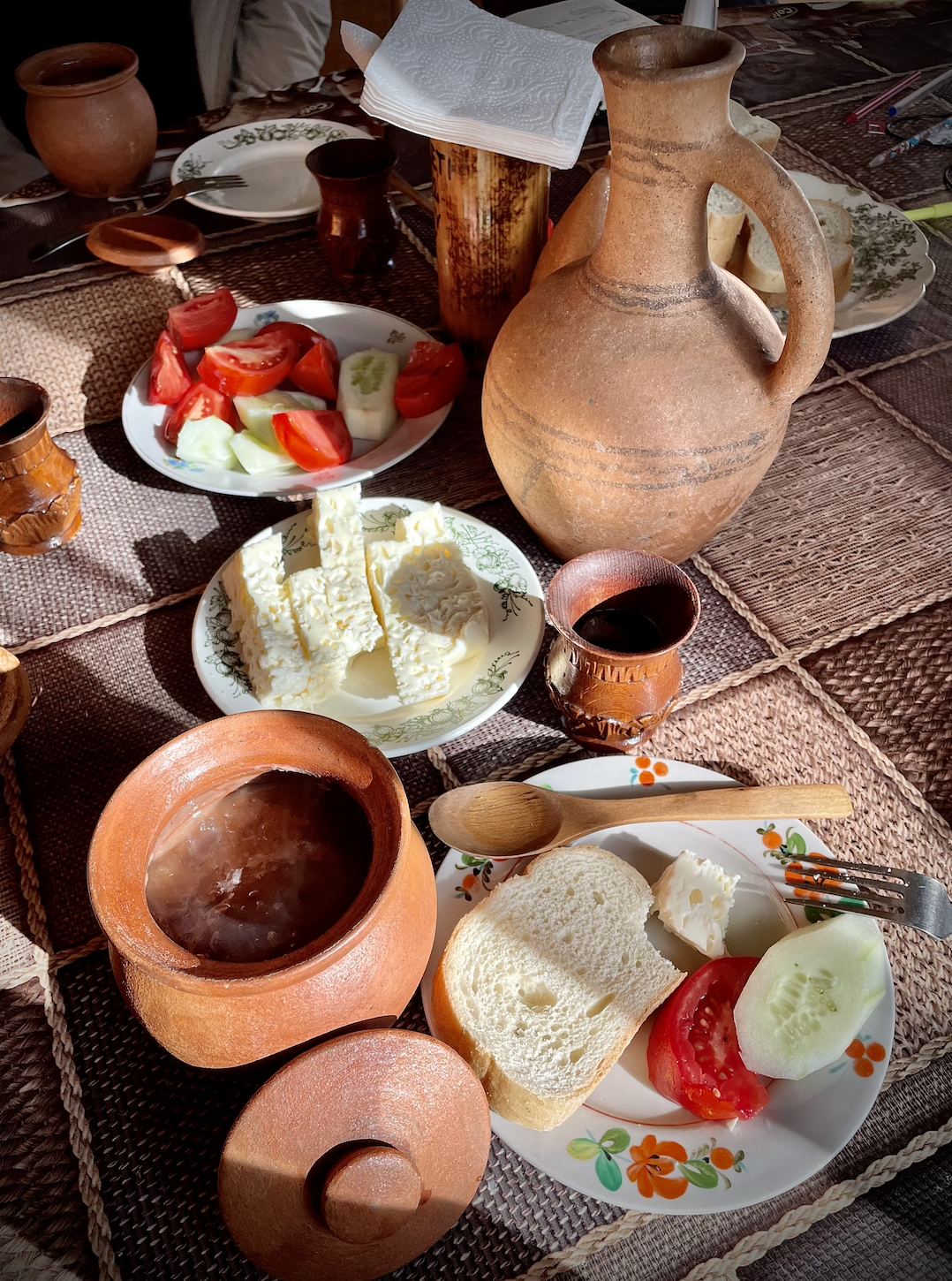
The famous Rachuli ham stands out for its exceptional raising and smoking process. This culinary treasure is celebrated for its rich flavors and traditional preparation. Pigs are raised on a unique feast-and-famine meal plan, resulting in meat with a layered effect. Seasoned with a blend of spices, the meat is skillfully cured, aged, and infused with a distinct, savory taste and tender texture. Known for its unique smoky aroma, Rachuli ham is a testament to the region’s gastronomic heritage. Not packaged or shipped outside Racha, authentic Rachuli ham can only be found locally, with many inauthentic versions available elsewhere.
Specialized agricultural and foraging products of the region, such as wheat, wine grapes, walnuts, and mushrooms, must also be mentioned:
- Asli, Makha, Zanduri, and Chelta Zanduri are all varieties of wheat that are endemic to the region.
- Racha is also home to some unique Georgian grape varieties, including Aleksandrouli and Mujuretuli, which introduce guests to new wines.
- Wild mushrooms, such as Kalmakha (oyster), can be found littering the dense forest floor and stumps. Late summer is a particularly spectacular time for foraging various edible fungi.
- Pterocarya fraxinifolia, or Caucasian Walnuts, are native to the Caucasus and considered a vulnerable species by the IUCN, but the microclimates of Oni reportedly produce a particularly delicious variety of the meaty nut. According to the Slow Food Foundation, “Georgia, and the Caucasus region generally, is a reservoir of walnut genetic diversity: If this heritage is not vigorously protected, the Avenisuri and countless other Georgian walnut varieties may disappear forever.”
In regards to tourism, visitors typically have the opportunity to enjoy these dishes when their host offers them at a guesthouse or homestay. There are very few public restaurants in the region and no publicized or marketed cooking classes. Of course, visitors can forage in season, but this should preferably be done with a local guide to avoid harvesting poisonous fruits and fungi. In addition to developing these experiences, there are opportunities to preserve, package, and sell food products for visitors to take home as souvenir snacks or as ingredients to try their hand at cooking a Rachan dish at home and think fondly back on their holiday.
Folklore, Craftsmanship and Entertainment
Georgian folklore is renowned for dance, polyphonic singing troupes, and their unforgettable shows. In Racha, this is celebrated annually during the International Folklore Festival “Sakartvelo” in the last week of August through the first week of September. The cities of Oni and Ambrolauri share the festival, with performances in each location alternately. During this event and throughout the year, visitors can learn about the gudastvir, the unique regional dances, poems, and songs, such as Kvedvrula and Rashovda.
Rachan folklore is distinguished and has been written about by explorers for centuries. There are legends about the etymology of village names and about the mystical mineral springs, among many other stories and myths. The folk poetry of the region has also been preserved and honored.
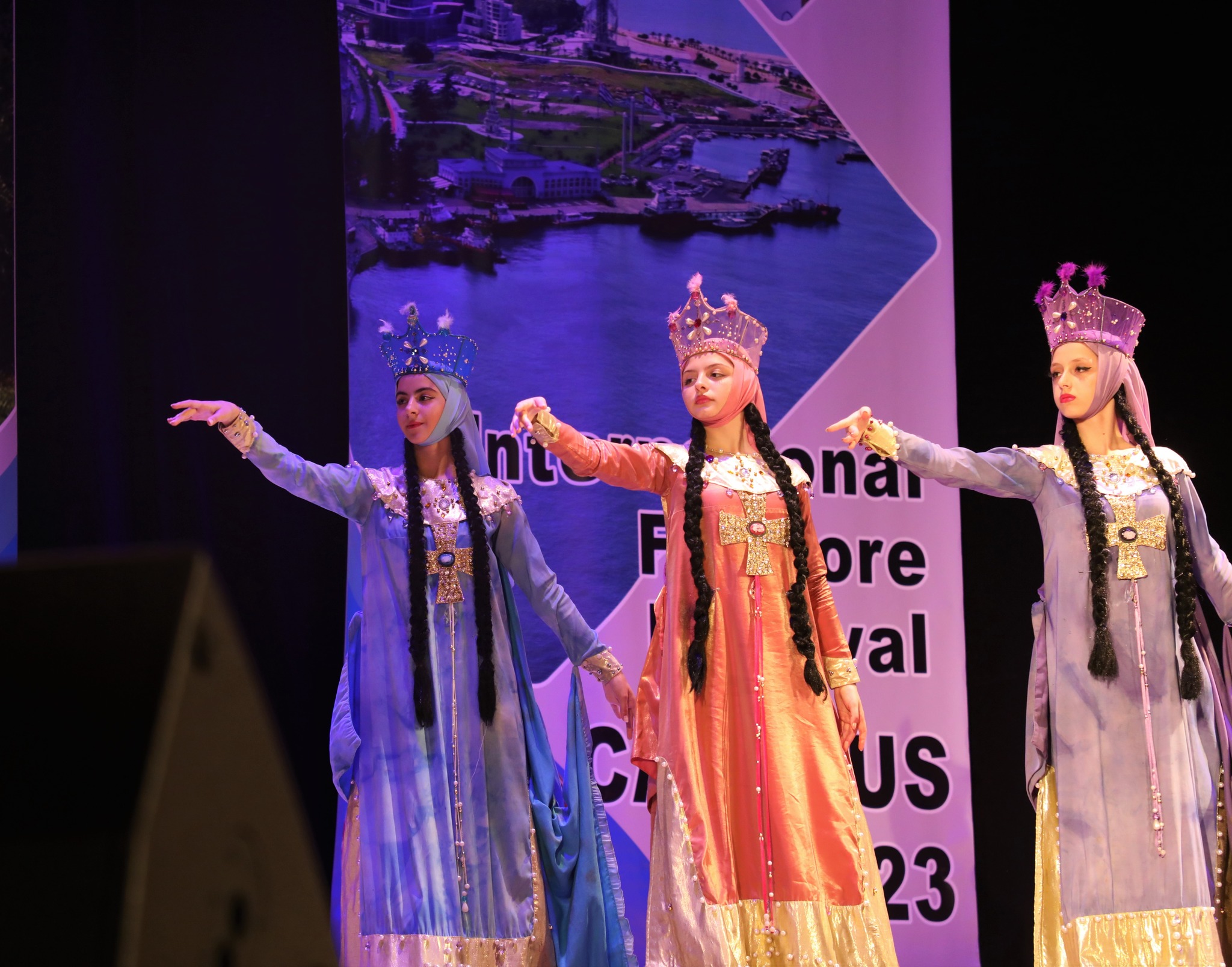
In addition to folklore and performance arts, Racha is famous for craftsmanship and artisans, including woodworking and felting. Houses built by Rachvelebi feature beautiful wooden decorations and ornaments. Hatmaking in Ghebi also follows a traditional pattern and process.
Handicrafts remain an important tool in craftsmanship for a tourism destination since visitors often buy products to take home as souvenirs. Tourism restores and closes the disconnect between rural and urban craftsmen and their market channels. An influx of visitors provides artisans with a greater market presence and demand for their goods and services, pushing their craft businesses to new heights of success and sustainability. Additionally, many tourists want to have a more immersive experience that extends beyond purchasing handicrafts and towards hands-on activities such as workshops and masterclasses.
Religious and Sacred Rituals
Religion plays a vital role in the traditions of Georgians, shaping their cultural identity and providing a framework for meaningful interactions with the divine realm. The Georgian Orthodox Church hasplayed a significant role in developing the nation’s culture and identity, with around 84% of the population identifying as Orthodox.
Religious holidays throughout the year in Oni include Bosloba, Atagenoba, and the Order of Glory, each marked by distinct celebrations involving cooking and other traditional rituals. These local celebrations, interwoven with the overarching themes of crucifixion, Corpus Christi, and the Nativity, provide a rich tapestry of religious expression in Georgian culture. The Order of Glory, as an example of a religious holiday celebrated on the fourth Sunday of Easter, is a day that celebrates the resurrection of Jesus Christ, and it is marked by a variety of rituals and traditions. One of the most common rituals is to light candles in front of icons of Jesus Christ, and to pray for forgiveness and salvation.
In addition to Georgian Orthodox traditions, Oni was historically home to a Jewish community, and the synagogue stands as a testament to the region’s multicultural history. The Jewish presence in Oni can be traced back to at least the 19th century. Jewish communities in Georgia, including Oni, were known for their distinct cultural practices and contributions to the local society. It is the third largest and the oldest synagogue in Georgia and is similar to the synagogue in Warsaw, which was destroyed during World War II. This square, domed synagogue was built in 1895 and has an interesting story to tell. In the 1920s, during the communist era, orders were given to demolish the Oni synagogue, but the Rabbi, together with his family, locked himself inside. Jewish and Georgian women, with babies in their arms, surrounded the synagogue and, by risking their lives, didn’t allow the building to be destroyed.
A recent monument opened on September 2nd, 2020, the Oni Holocaust Monument, is located near the House of Culture in Oni. The monument is especially dedicated to Sergei Metreveli, who helped Jews in Georgia escape the Nazis and shelter in Racha. In recent years, Sergei Metrevelihas has been nicknamed “the Georgian Schindler”. This monument and the Oni Synagogue will become part of the Council of Europe’s certified Jewish Cultural Heritage Route.
Because of both of these religious traditions, along with the remnants of ancient pre-Christian practices, Oni Municipality bears significant potential as a pilgrimage tourism destination.
Interpersonal Characteristics
The Rachian people are renowned for their distinctive interpersonal characteristics that set them apart in the cultural tapestry of Georgia. Hospitality is a cornerstone of Rachian culture, with locals exhibiting an unparalleled openness, care, and warmth towards outsiders.
The term “Sidinje” is a word often intertwined with Rachian culture and mannerisms that reflect an intentional, thorough, and passionate way of working with a commitment to well-being. Rachveli is notably calm and languorous, a trait often humorously underscored in folklore and stories about the region.
The Rachvelian dialect, its language and variations, further emphasize their unique identity. Terms of endearment often take the form of -uka as a suffix. It can be added to any object to emphasize it is a “cute, little” thing. For example, some expressions like puruka and kveeluka (bread and cheese) add another layer to the cultural richness and show off the nuanced Rachvelian linguistic diversity.
Preserving Oni’s Intangible Cultural Heritage Through Sustainable Tourism
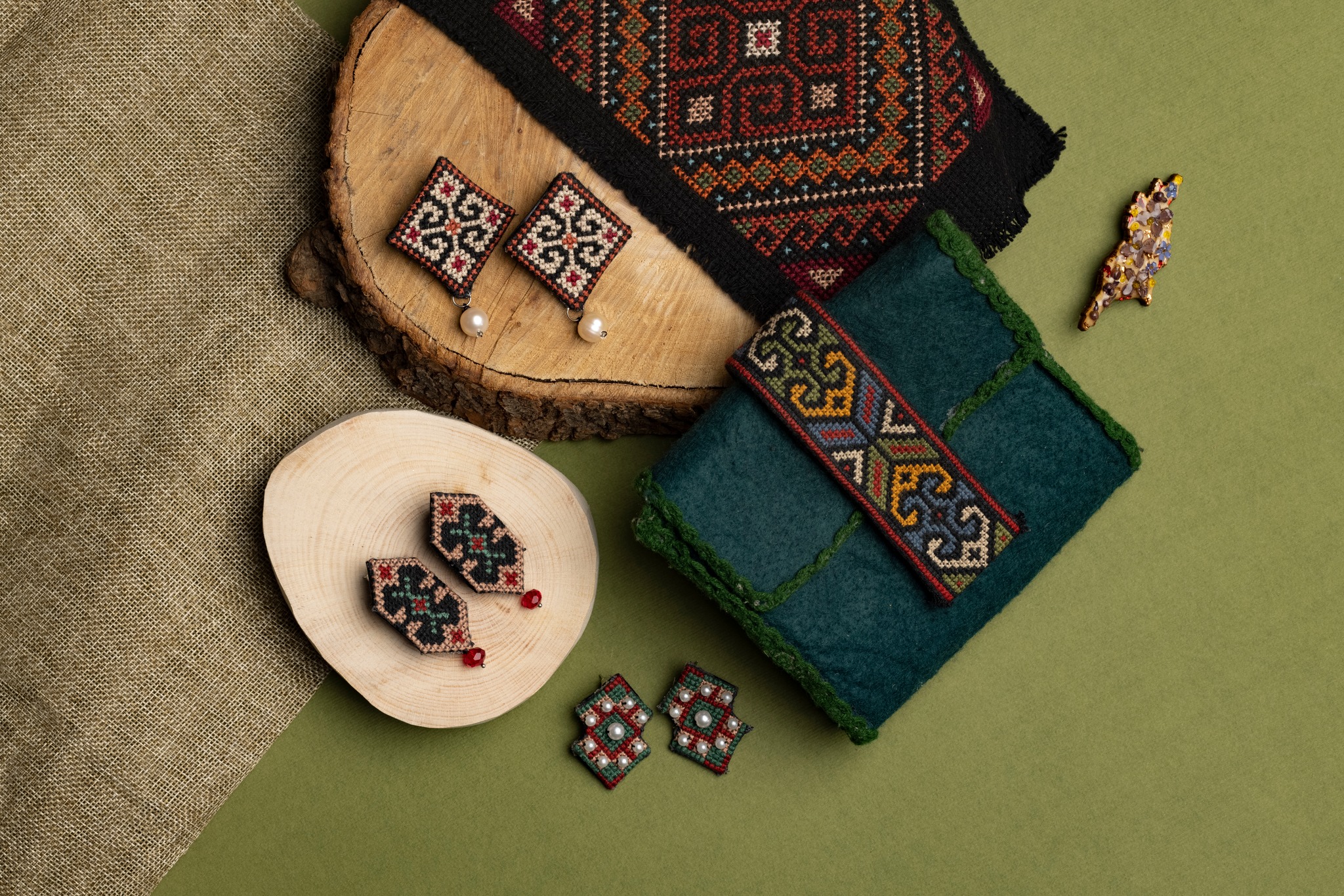
Oni Municipality’s intangible cultural heritage is a treasure trove of traditions, customs, and practices that have been passed down through generations, shaping the region’s distinct identity. By harnessing its authentic charm and nurturing a responsible tourism ethos, Oni charts its own course to become a thriving and welcoming haven, enriching the traveler’s experience and fostering enduring benefits for the local community and the entire Racha region.
As the destination emerges as a sustainable tourism hub, embracing and celebrating these intangible elements is crucial, ensuring their preservation for future generations. By promoting responsible tourism practices and fostering collaboration between local communities, businesses, and authorities, Oni can safeguard its rich heritage while providing visitors with authentic and immersive experiences.
Travelers seeking off-the-beaten-path adventures are invited to embark on a journey to Oni, where they can savor the flavors of traditional dishes, witness the artistry of local craftsmen, and immerse themselves in the region’s sacred rituals and celebrations. By supporting local initiatives and engaging with the warm and hospitable Rachvelian people, visitors can play a vital role in sustaining Oni’s intangible cultural heritage, ensuring that these treasured traditions continue to thrive for generations to come.
